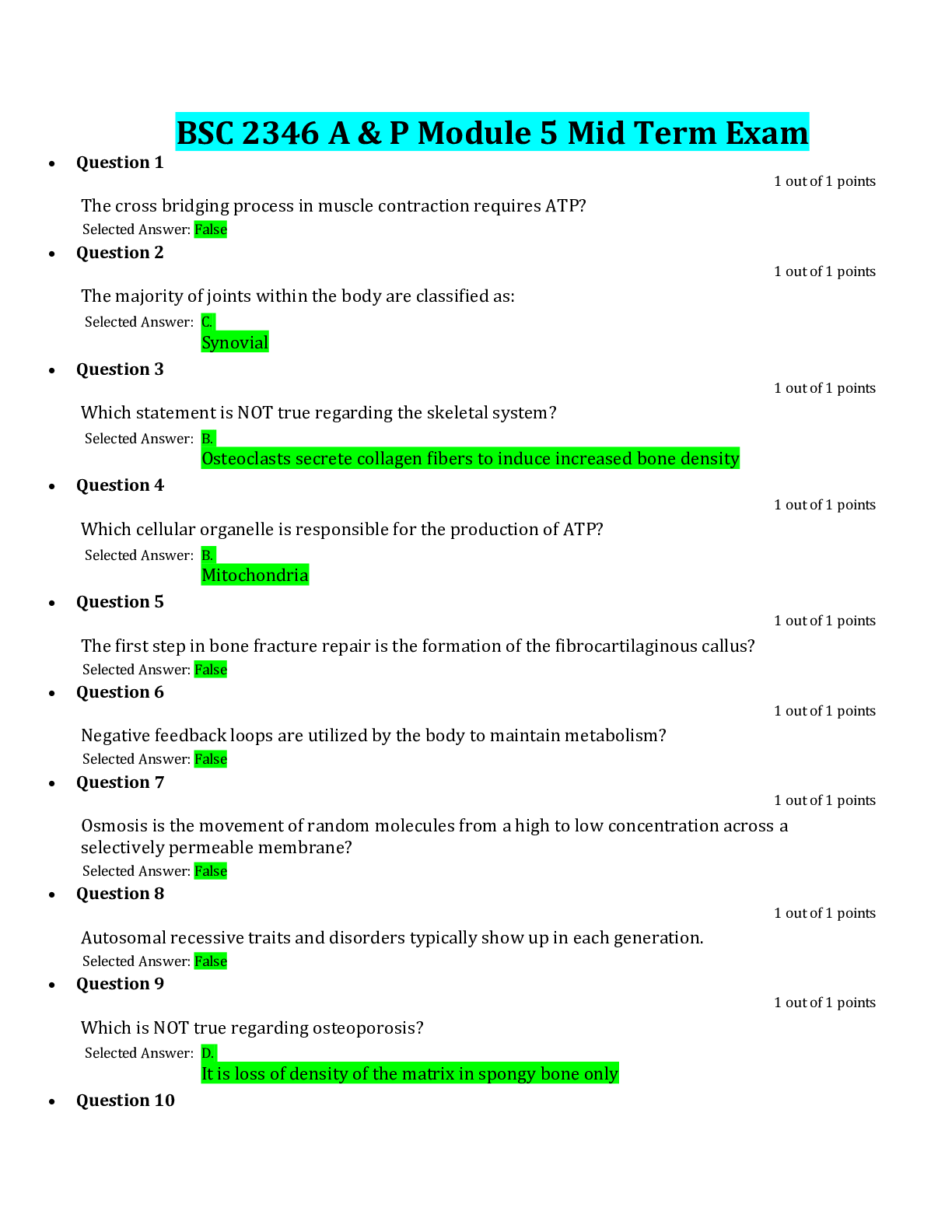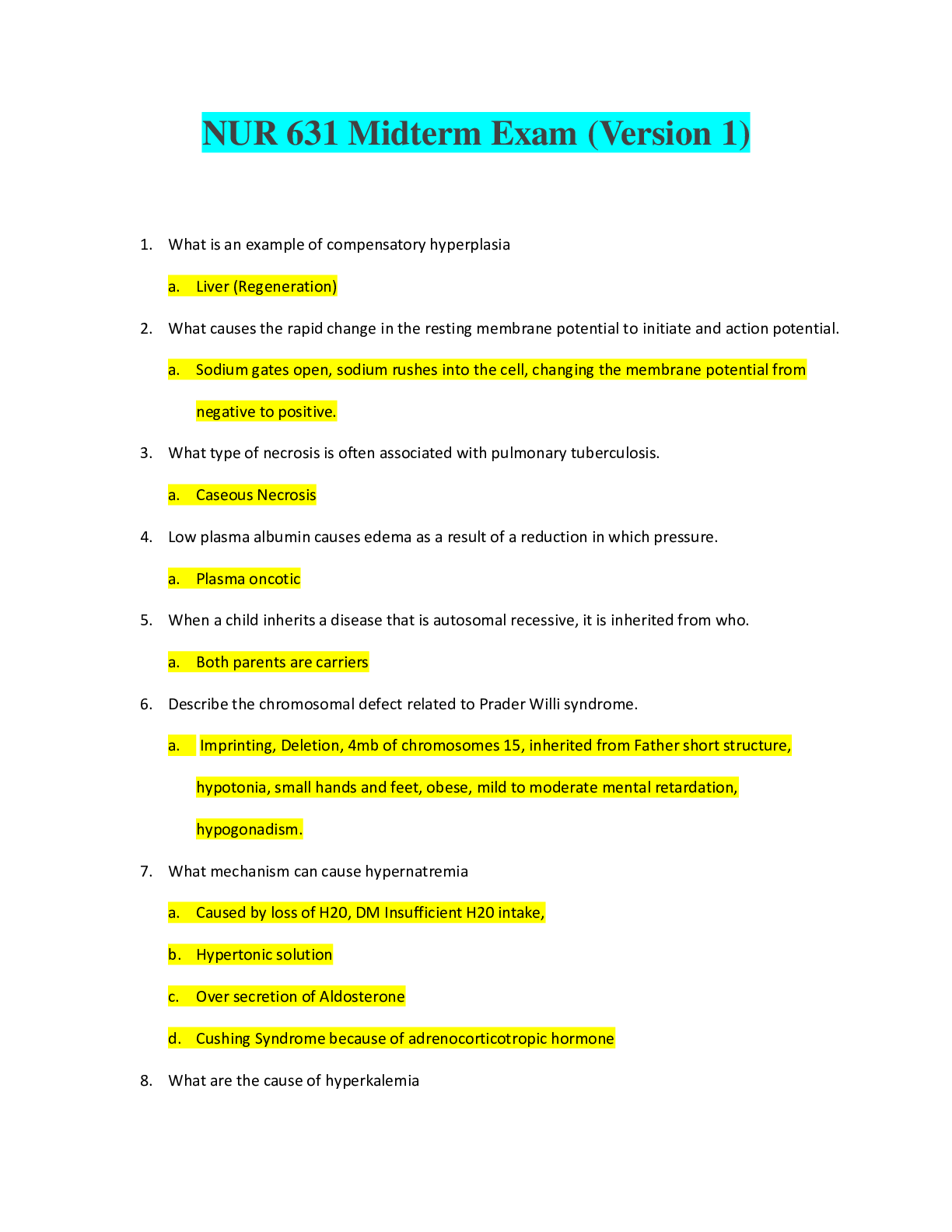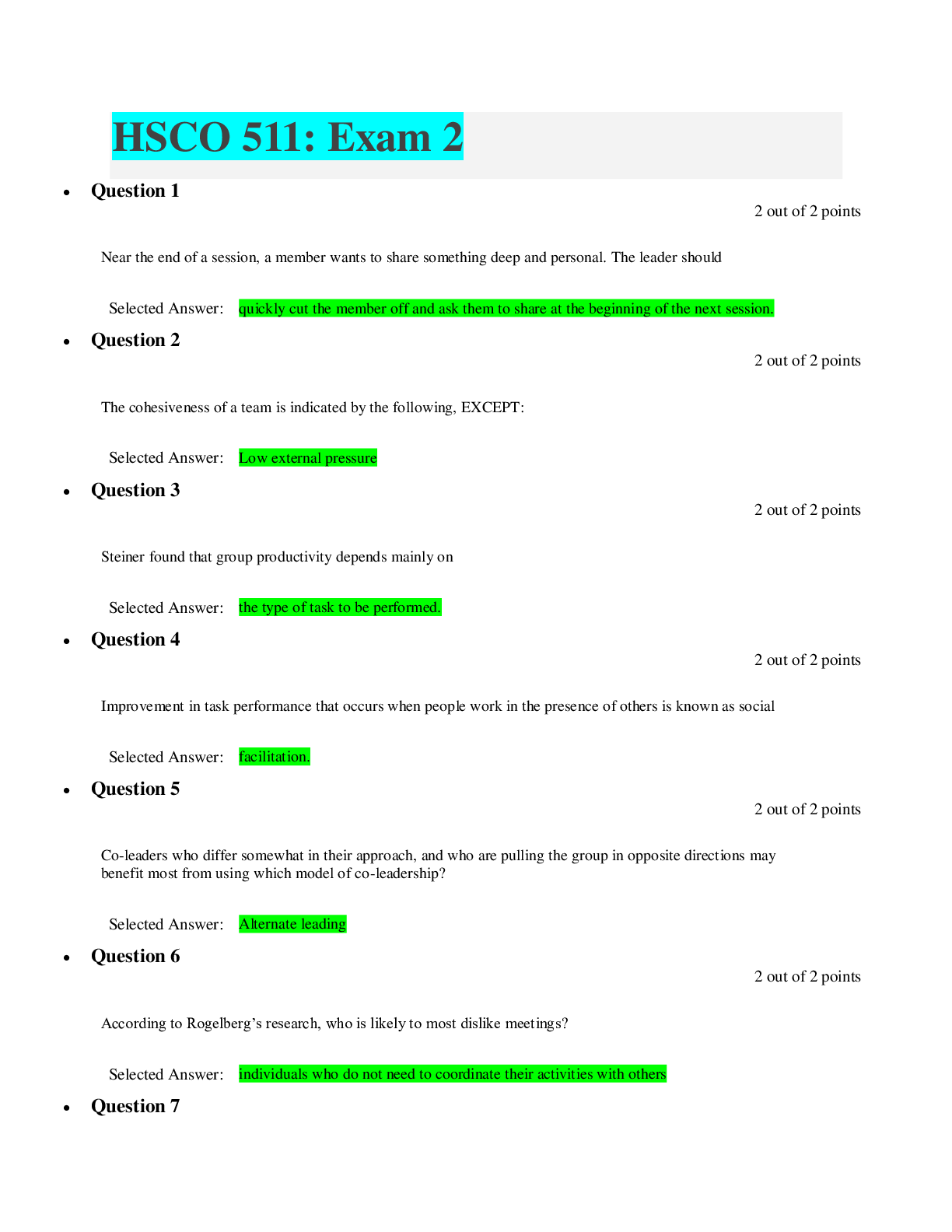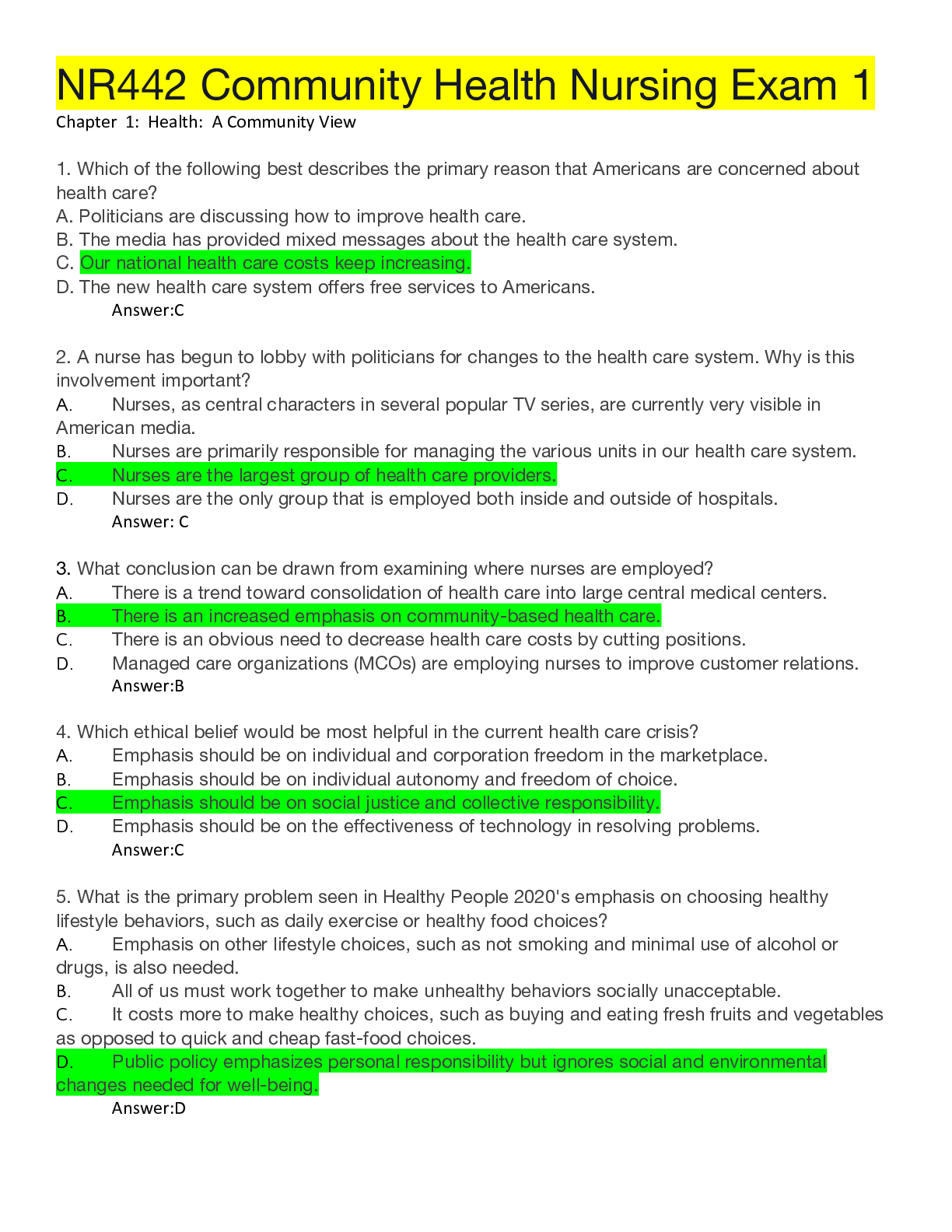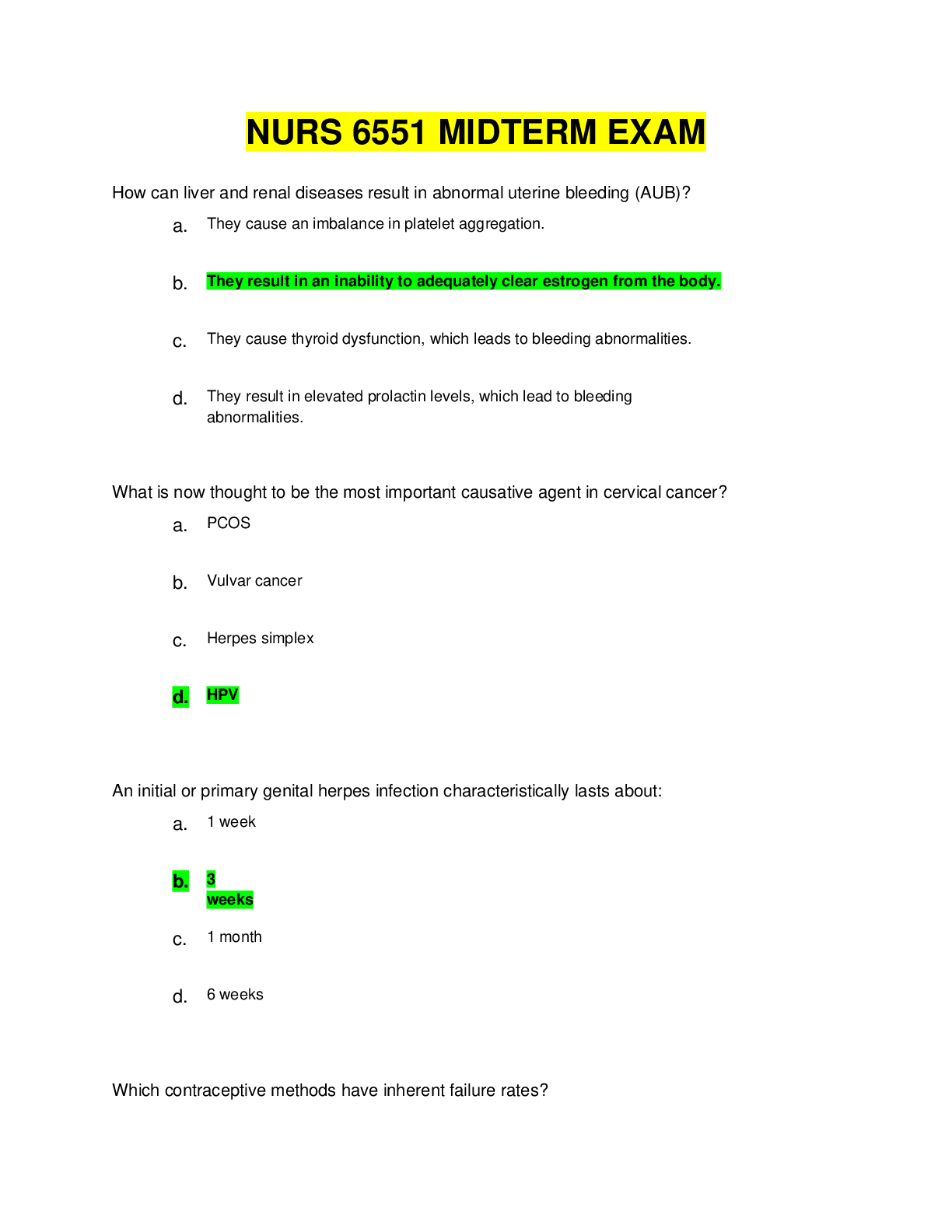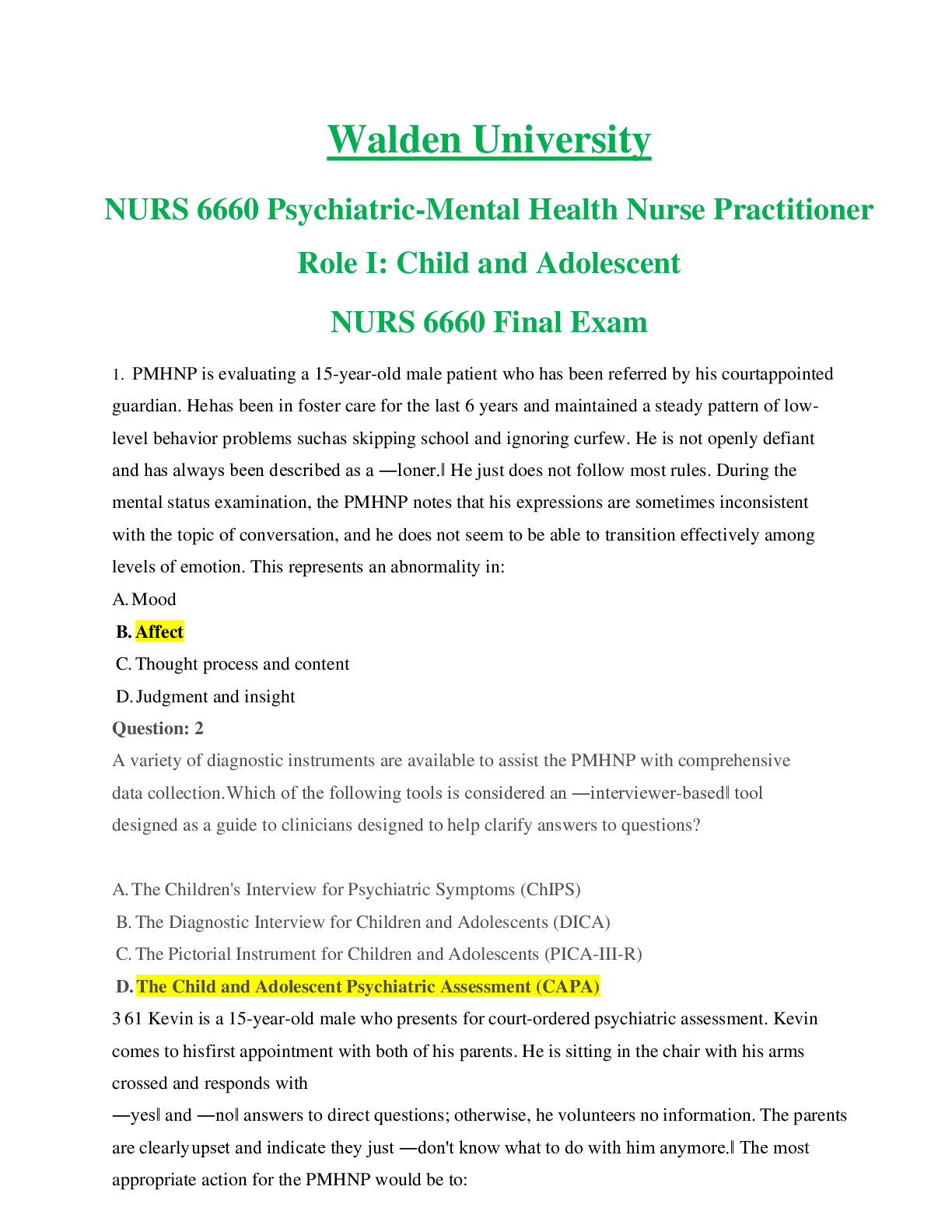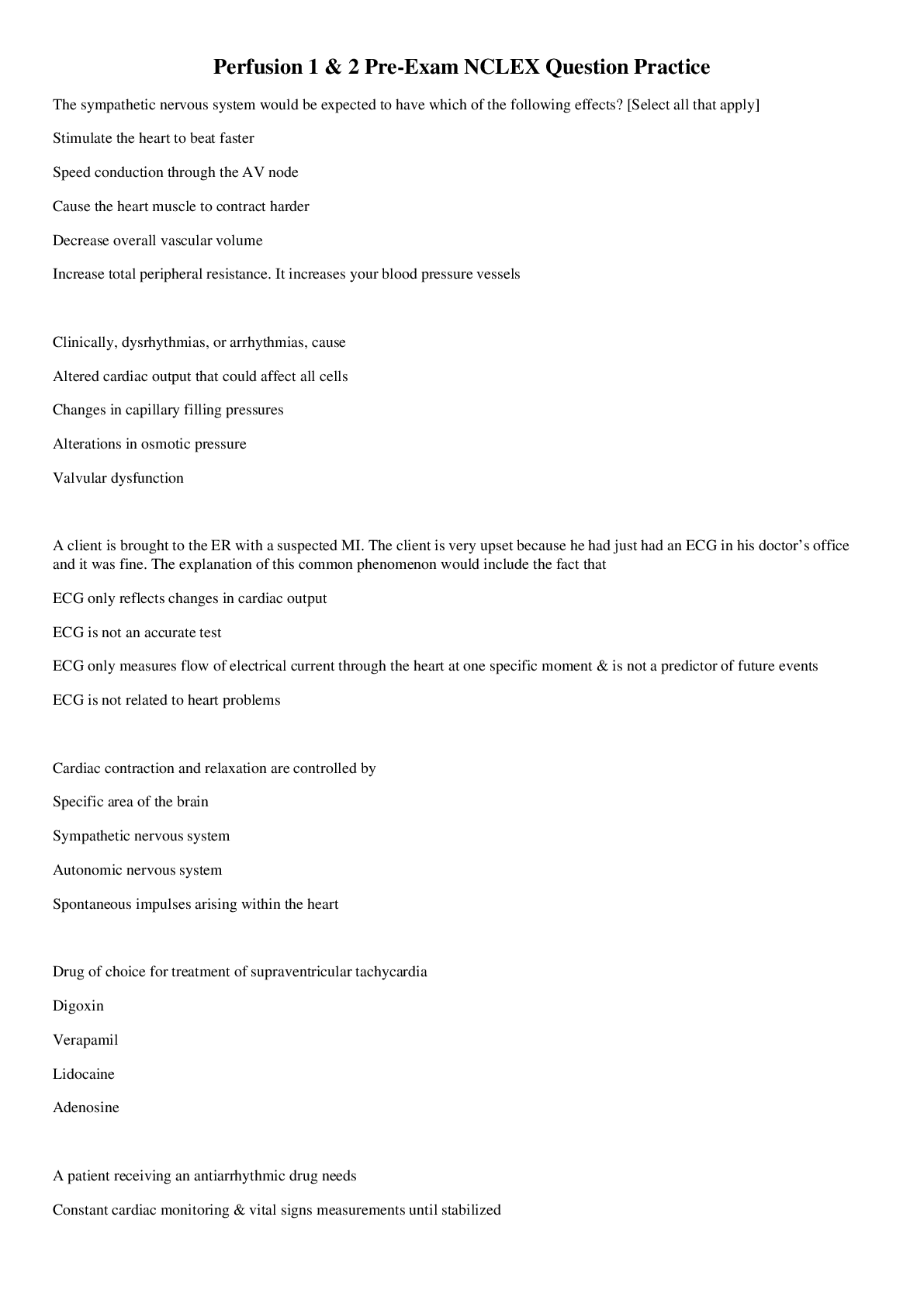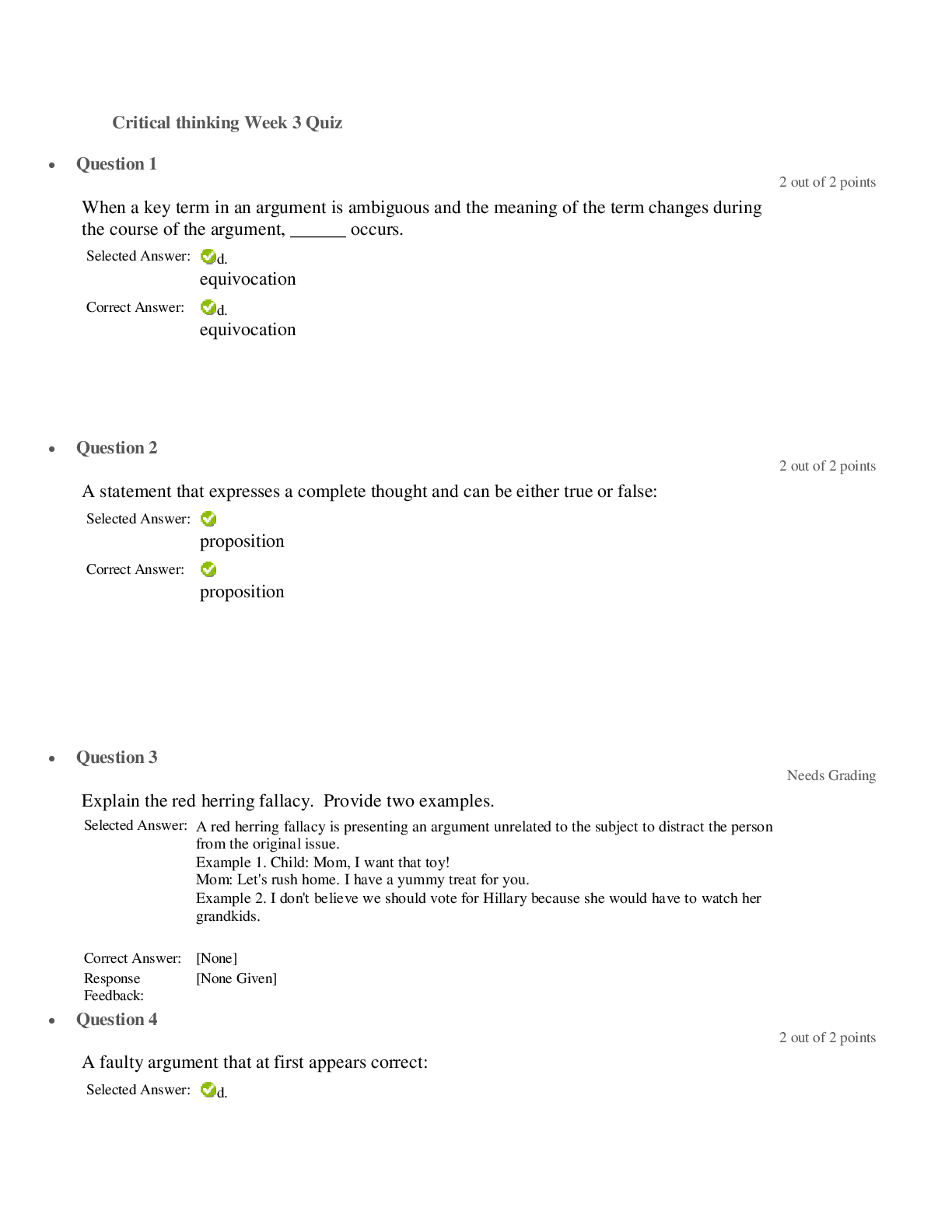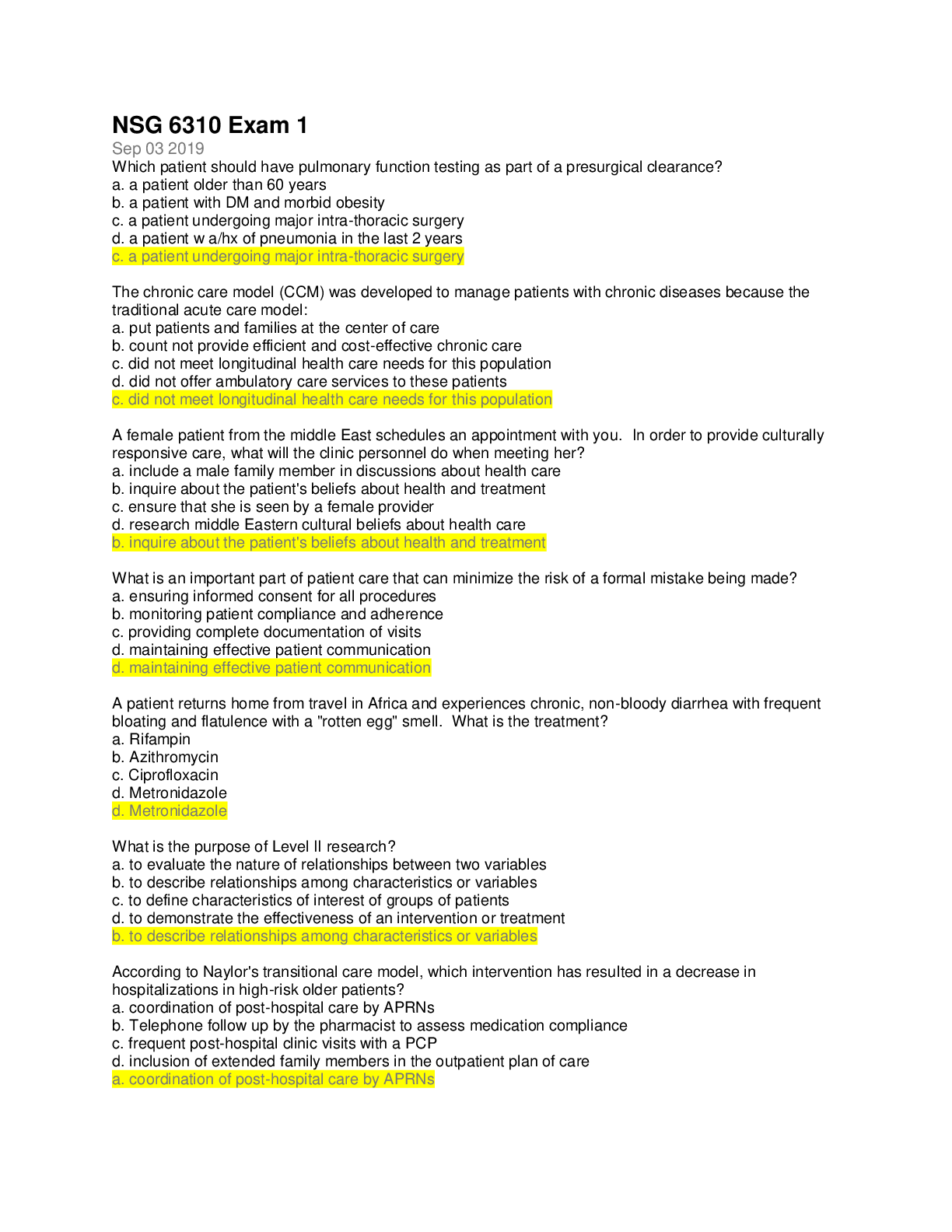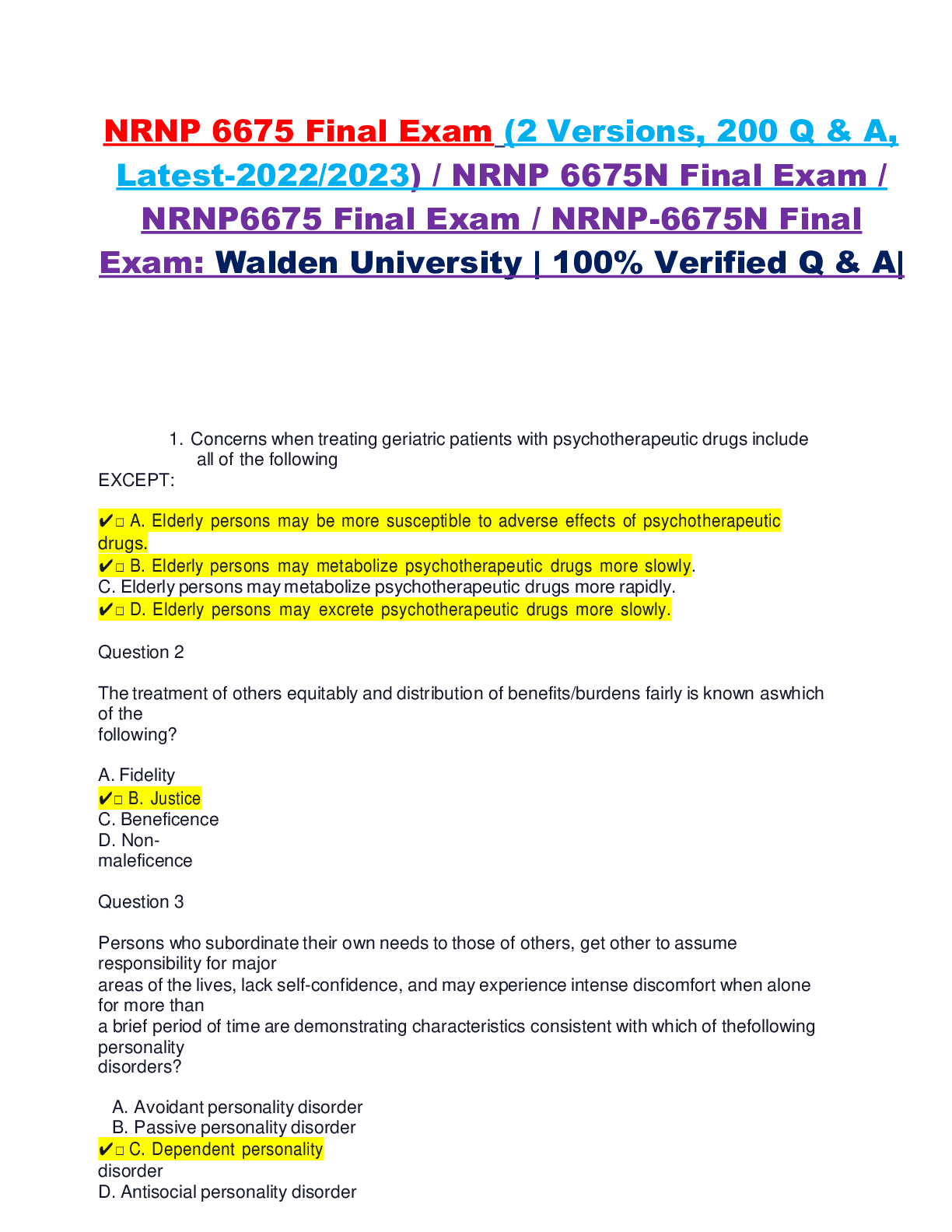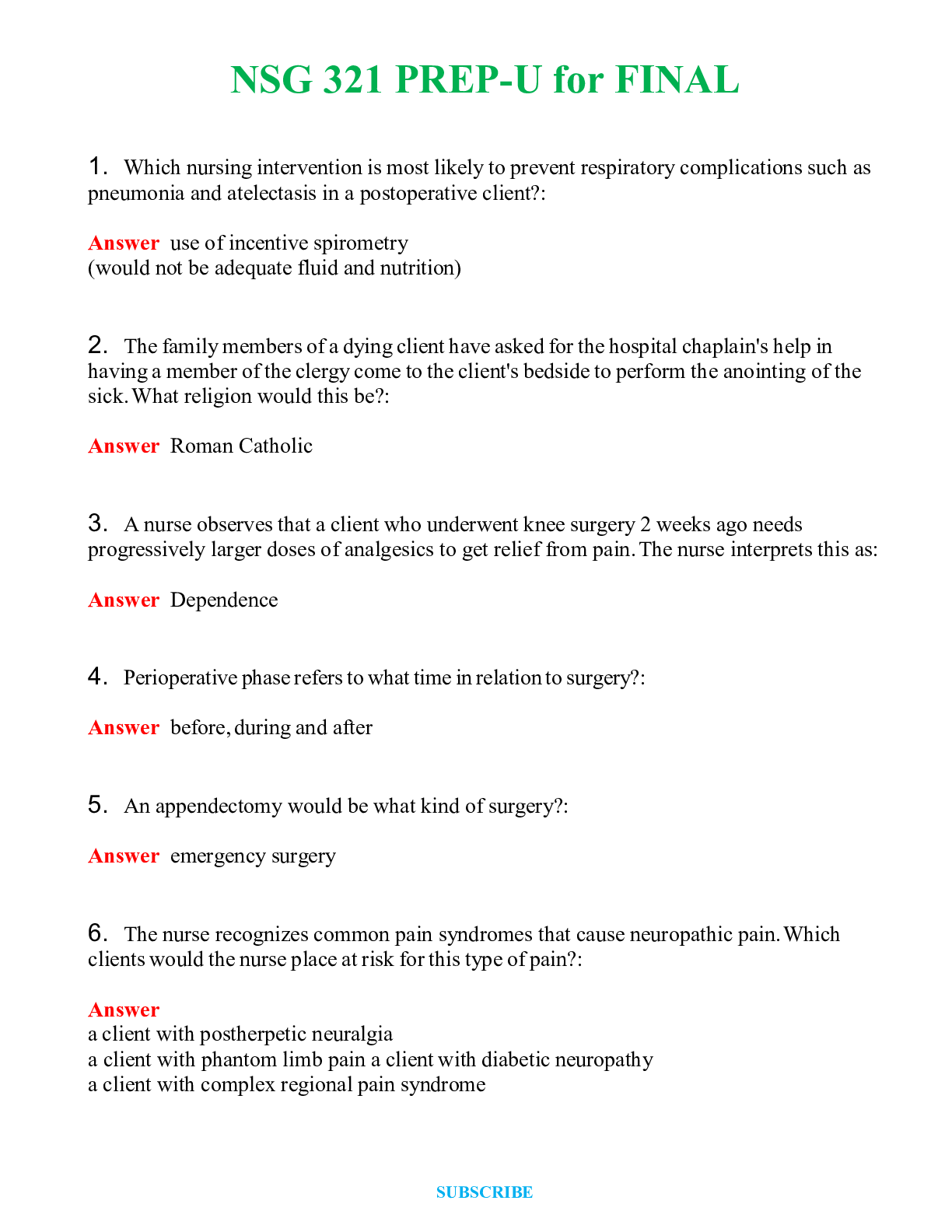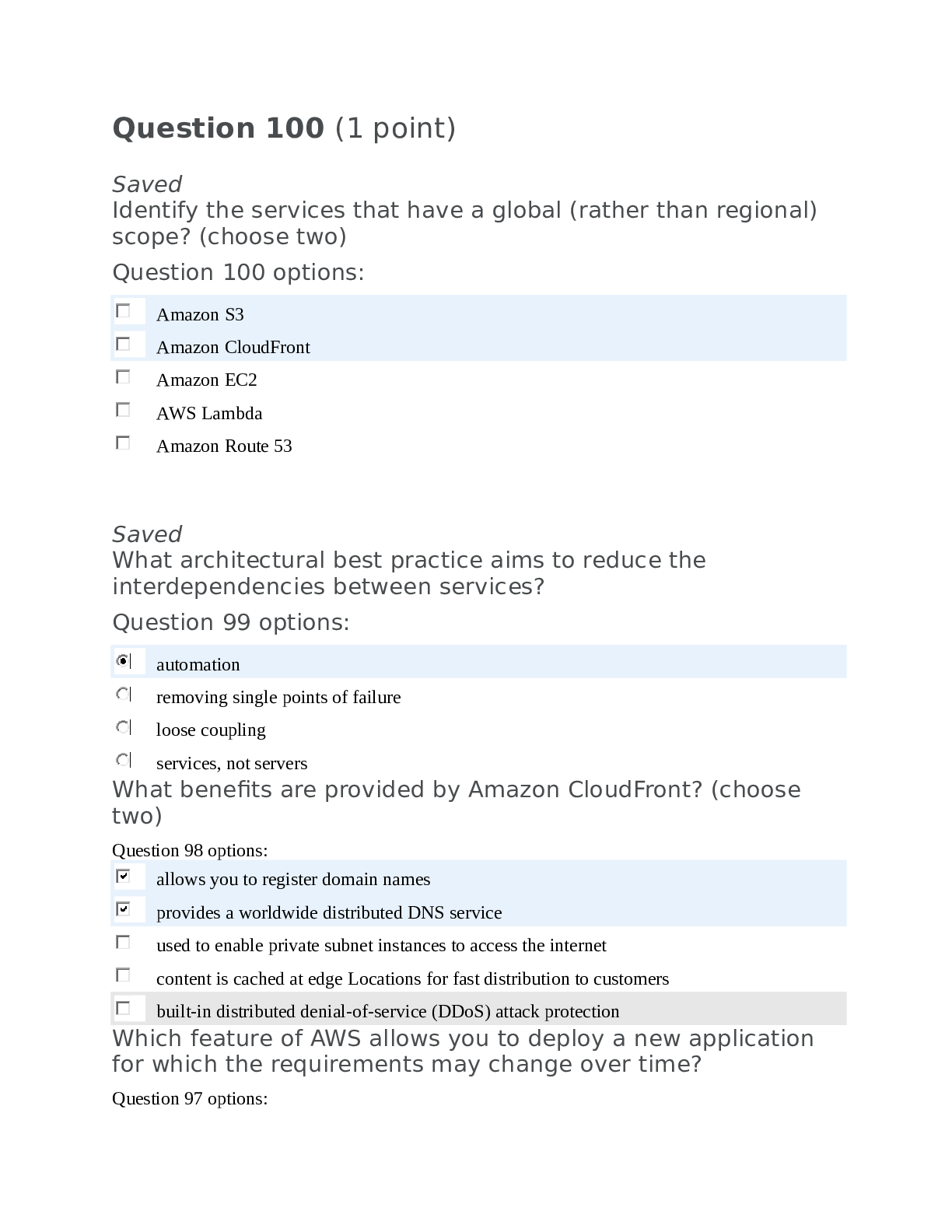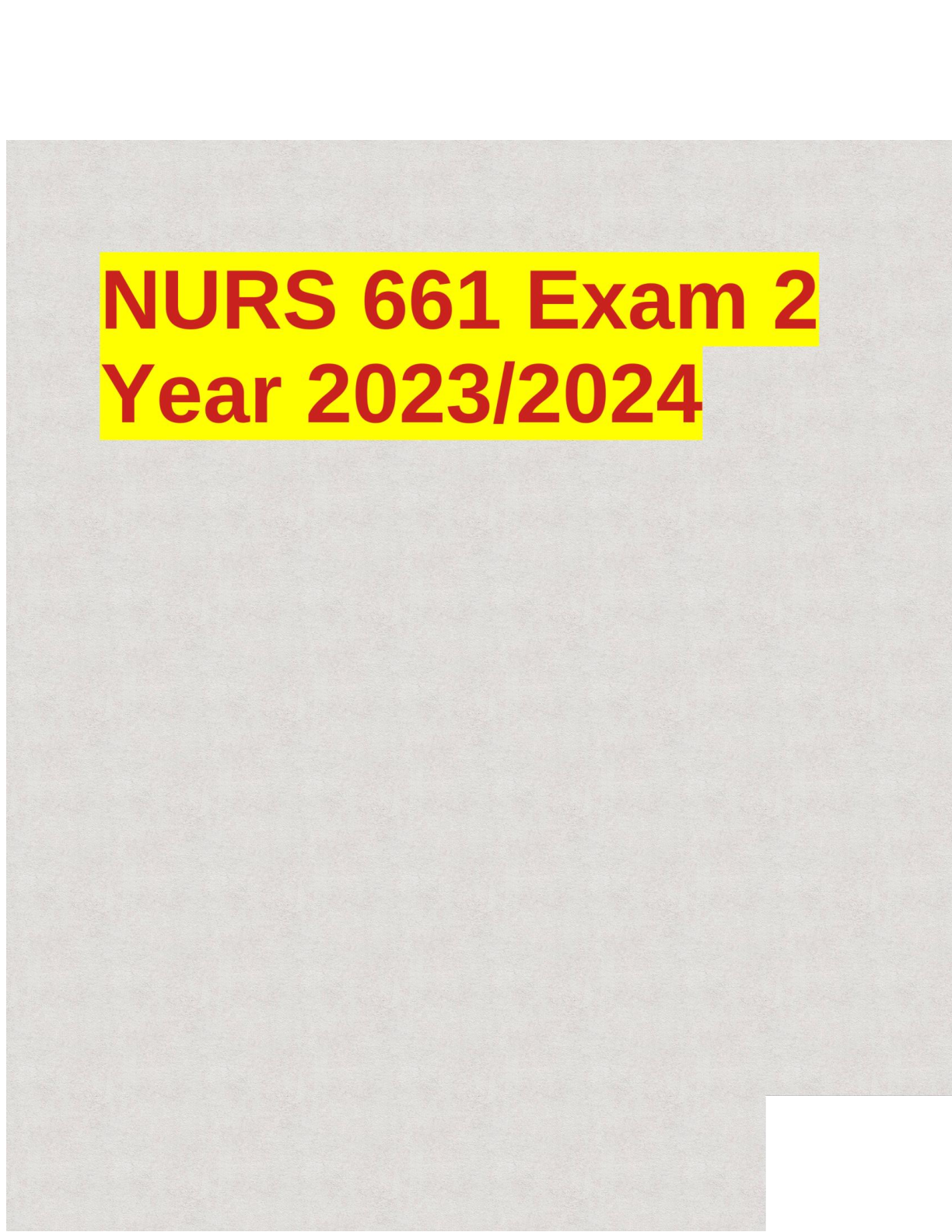Anthropology > EXAM > ANTHRO 1000 Lesson 7 Latest Assessment Test_General Anthropology-Already Graded A+ (All)
ANTHRO 1000 Lesson 7 Latest Assessment Test_General Anthropology-Already Graded A+
Document Content and Description Below
1. Which of the following subsistence strategies did all human groups use until 10,000 years ago? A. agriculture B. foraging C. horticulture D. pastoralism E. reciprocity 2. What is one primar... y reason food collectors don’t work harder? A. They are too ill from disease and malnourished. B. Their upbringing has made them lazy. C. They spend too much time on rituals. D. There is no need to, and it would overexploit resources. E. It is prevented by government and settled agriculturalists. 3. Which of the following does not characterize agriculture? A. the use of terraces B. irrigation systems C. the use of domestic animals D. the use of a fallow period E. intense cultivation 4. What is the basic social unit of foragers? A. the tribe B. the clan C. lineage D. the band E. the totem 5. Which of the following characterizes horticulture? A. the use of terraces B. the use of a fallow period C. the use of domestic animals D. irrigation systems E. intensive cultivation 6. Which of the following statements about negative reciprocity is not true? A. Negative reciprocity usually involves dealing with people outside or on the fringes of your social system. B. Silent trade is an example of negative reciprocity. C. Stealing is an extreme form of negative reciprocity. D. Negative reciprocity cannot be practiced by a society that already practices generalized reciprocity. E. Negative reciprocity involves the attempt to get something for as little as possible. 7. What does the mode of production refer to? A. the way in which production is organized B. the major productive resources of an economy including the land, labor, technology and capital C. the profit-oriented system principle of exchange in which goods and services are bought and sold and values are determined by supply and demand D. the rational allocation of scarce resources to alternative ends E. the exchange between social equals 8. What is the market principle? A. the movement of goods, services and resources from the local level to a central administrative location, then back to the local level B. the exchange of goods, services and resources between social equals C. the rational allocation of scarce means to alternative ends D. the exchange of goods, services and resources in a marketplace E. the use of money to buy and sell things at prices determined by supply and demand 9. Which of the following is not true of a potlatch? A. Some tribes still practice potlatch to this day, as a memorial to the dead. B. The potlatch made enemies of local groups along the northern Pacific Coast. C. Potlatching served to prevent the development of socioeconomic stratification. D. Potlatching was practiced by the Salish. E. Potlatching tribes were foragers. 10. What is one characteristic of pastoral societies? A. short fallow cycle B. large settlements C. permanent settlements D. almost exclusive dependence on meat for food E. trade 11. In a patrilineal descent group, which person is a relative? A. MoBr B. FaSi C. MoSi D. Husband E. Mo 12. In a bilateral descent group, which person is not a relative? A. Br B. Fa C. Hu D. Si E. FaFa 13. Which of the following is your cross cousin? A. your mother’s sister’s daughter B. your father’s brother’s daughter C. your mother’s brother’s son D. your mother’s sister’s son E. your father’s brother’s son 14. Which of the following theories have not been proposed by anthropologists? A. The long dependency period of human children requires marriage to ensure that fathers help care for children. B. Marriage exists because it ensures an efficient division of labor between men and women. C. Marriage among humans reflects the general mammalian tendency toward pair-bonding. D. The continuous sexual receptivity of human females exists for durable pair-bonding. E. Marriage exists in order to ensure that males will help protect mother and her offspring and obtain food. 15. Exogamy is best defined as A. rules that dictate marriage outside a group to which a person belongs. B. being synonymous with cross-cousin marriage. C. rules that dictate marriage within a group to which a person belongs. D. forbidden sexual relations with a close relative. E. the custom by which the children of two brothers or two sisters marry. 16. What is the term for a family in which an individual is raised? What is the term for a family in which an individual may later join through marriage? A. family of procreation; family of orientation B. family of orientation; family of procreation C. endogamous family; exogamous family D. exogamous family; endogamous family E. ambilineal family; bifurcate family 17. Which of the following has been proposed as an explanation for the universal incest taboo, as defined by kin term primitives? A. need for family competition to extrude adolescents B. the natural mutual sexual attraction to siblings C. inbreeding would lead to the expression of bad genes D. reduces chances of entangling marital alliances with other families E. None of the above. 18. Under which form of postmarital residence rule systems do couples move to the wife’s community? A. patrilocal B. matrilocal C. unilocal D. generational E. neolocal 19. Which of the following kinship terminologies is commonly found in societies with neolocal postmarital residence rules? A. lineal B. bifurcate merging C. generational D. bifurcate collateral E. bilineal collateral 20. What is the term for the nuclear family that is formed when one marries and has children? A. family of procreation B. zadruga C. family of orientation D. tarawads E. clan B. True/false → 5 questions, 1 point each, 5 points total 21. Societies become more egalitarian as their adaptive strategies move along the cultivation continuum. A. True B. False 22. An anthropological analysis of the potlatch shows that this custom is a cultural adaptation to alternating periods of local abundance and shortage, and not an example of irrational wasteful behavior, as Christian missionaries and proponents of classic economic theory argued. A. True B. False 23. Clans typically have more members and cover a larger area than lineages. A. True B. False 24. Affinals is a term in a lineal kinship terminology system that includes sibling, nieces, and nephews. A. True B. False 25. Levirate marriage refers to the custom by which a widower marries the sister of his deceased wife. A. True B. False C. Matching terms Match the following terms with the best definition. → 8 terms, 1 point each, 8 points total 26. patrilocal residence A. couple lives with or near groom’s parents B. couple lives with or near bride’s parents C. couple lives away from parents of both bride and groom D. couple can live with either the groom’s or the bride’s parents E. bride and groom each live apart from each other 27. neolocal residence 28. matrilocal residence Match the following terms with the best definition. 29. levirate A. marriage with brother of deceased husband B. marriage with sister of deceased wife C. children of mother’s brother or father’s sister D. children of siblings of same gender E. marriage to sister’s husband 30. parallel cousins 31. sororate 32. cross cousins 33. sororal polygyny D. Short answer What are three myths about foragers? Use a complete sentence to describe each one. → 3 items, 1 points each, 3 points total. 34. Foraging populations possessing simple technology is a myth. 35. Foragers living a difficult and miserable life is a myth. 36. Foragers are unhealthy, and their lifestyles are dirty and unhygienic is also a myth. Using kin term primitives, list four members of your family, at least one who is a generation older than you. For example, your aunt could be your father’s sister, or your mother’s sister. If you do not wish to use your own family, make one up—just be sure to list one as a generation older. → 4 item, 1 points each, 4 points total 37. MO 38. MOBR 39. FA 40. FAMO END OF LESSON 7 ASSESSMENT. [Show More]
Last updated: 1 year ago
Preview 1 out of 7 pages

Reviews( 0 )
Document information
Connected school, study & course
About the document
Uploaded On
Sep 16, 2019
Number of pages
7
Written in
Additional information
This document has been written for:
Uploaded
Sep 16, 2019
Downloads
0
Views
144


